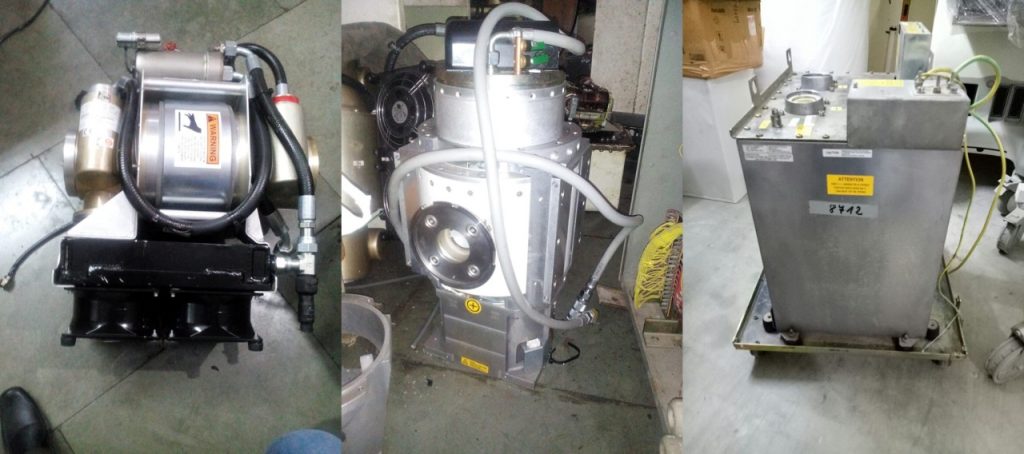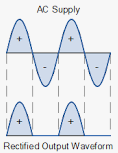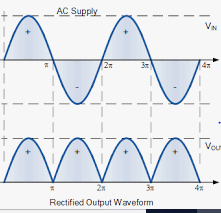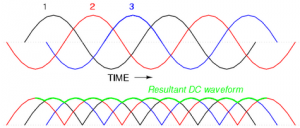
The conventional (Single Phase) X-Ray and High Frequency X-Ray machines significantly differ in at least the following three aspects:
- Efficiencies
- Ease of use
- Quality of Outcome
1. Efficiency
High frequency x-ray generators are better as compared to conventional single-phase generators due to efficient generation and control of high voltage power required to drive the x-ray tube. How so?
X-ray units require a high voltage generator to supply necessary power in an x-ray tube. In order to control the speed at which the electrons travel and strike the anode, high-voltage/potential needs to be maintained between the cathode and the anode in the X-Ray tube . The higher the potential/ voltage (KV), higher the speed of electrons and, hence, higher the penetration power of X-radiation. (For more details on functioning of X-Ray machine please click here).
AC power, supplies x-ray units with sinusoidal currents, resulting in ‘peaks and troughs’ leading to the X-Ray tube to produce x-radiation only half of the cycle.
Single-Phase systems
A single-phase high voltage generator converts this AC power into a half or full wave rectified supply. The half wave rectification results in a peak voltage that will dip to zero and increase again. This is why Kilovoltage Peak (kVp) was used as a parameter in earlier X-Rays.

Even after full-wave rectification, a single-phase generator results in ups and down or ripple in the voltage, hence delivering varying potential to the tube. This impacts the consistency, amount and penetration power of radiation during the procedure. Only a portion of the radiation is use-able and low energy radiation is filtered out.

There-phase and Constant Potential Systems
The advancement of high voltage generators from single-phase to three-phase and then to constant potential generators has solved the problem of voltage ripples, delivering continuous, uninterrupted voltage.

High frequency X-Ray generators fully rectify AC current and supply the tube with DC current (High Frequency means – measuring even upto 100KHz instead of standard supply frequency of 50Hz). This results in a constant stream of relatively consistent radiation hence the term kV is used now rather than kVp. Most systems now use constant potential generators. The present HF X-Ray generators use the frequency-inverter-rectifier technology, to produce near constant potential.

Advantage of High Frequency X-Ray generators over Conventional Single-Phase generators
In order to obtain similar film optical density and/or to obtain similar radiation dose the HF X-Ray generators require less exposure time (nearly half- to- 2/3rd) as compared to single-phase (SP) generators, due to constant potential and radiation. HF generator is found to be approximately two times more efficient, has better reproducibility and produces sharper, better quality images than Single phase/ Three phase generator.
2. Ease of Use
High Frequency Generators also provide Digital Operator Consoles as opposed to the physical dials that were used with Standard Frequency generators to make proper settings for each examination. With a High Frequency system, the operator simply chooses the exam type (ie AP lumbar) from a list of options, inputs the patient’s thickness (in centimeter (cm)) and presses expose button. With a Conventional X-Ray system the operators had to set the proper kVp, mA, and exposure time setting for each exam. If the operator is not very well versed with X-Ray physics, dosage calculations and image quality parameters, they could be doing many re-takes resulting in lesser through-put of the patients in the X-Ray room and also perhaps higher radiation exposure to patients. With High Frequency Generators the X-Ray procedure becomes much easier to use with less calculations involved allowing for a faster patient turn-arounds and return on investment.
With lower power requirements from HF generators as compared conventional X-Rays the transformer and generator physical size also reduced. Some transformers come integral with tube head.
3. Quality of Outcome
In the Medium/ HF generators, higher frequency square wave voltage is sent to primary of the high-frequency transformer. Higher frequency of pulses to the high tension supply of an x-ray generator results in the spectrum of the x-ray beam being narrowed, potentially lowering of patient dose. The exposure timing can be more precise with and short with near constant potential wave form. Further, when an x-ray transformer operates in the high range of 2000 to over 8000Hz, instead of the conventional line frequency, it becomes more efficient. It can be reduced in weight to perhaps one-tenth and even more in bulk. As a result of the diminished size, transformers upto 30kW can be mounted within the tube head obviating high-tension cables.
In conclusion – High frequency x-ray generators are better as compared to conventional single-phase generators due to efficient generation and control of high voltage power required to drive the x-ray tube as well as ease of use. High Frequency Generators also
- Produce Superior Image Quality
- Need to use up to 40% less radiation dose
- Have superior patient Penetrating Properties
- Easy pre-configured settings help reduce Re-Takes and Double exposures to patients
- Higher patient through-put
- Better ROI
- Compact size & design and lower cost of manufacturing and installation.
